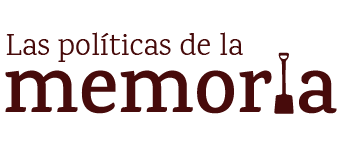Anstett, Élisabeth and Jean-Marc Dreyfus – editors-(2015) Human remains and identification Mass violence, genocide, and the ‘forensic turn’
| Publication Date | Title | Edited by | Type |
|---|---|---|---|
|
2015
|
Human remains and identification Mass violence, genocide, and the ‘forensic turn’ |
Élisabeth Anstett and Jean-Marc Dreyfus | Libro |

Human remains and identification presents a pioneering investigation into the practices and methodologies used in the search for and exhumation of dead bodies resulting from mass violence. Previously absent from forensic debate, social scientists and historians here confront historical and contemporary exhumations with the application of social context to create an innovative and interdisciplinary dialogue, enlightening the political, social and legal aspects of mass crime and its aftermaths.
Through a ground-breaking selection of international case studies, Human remains and identification argues that the emergence of new technologies to facilitate the identification of dead bodies has led to a “forensic turn”, normalising exhumations as a method of dealing with human remains en masse. However, are these exhumations always made for legitimate reasons?
Multidisciplinary in scope, this book will appeal to readers interested in understanding this crucial phase of mass violence’s aftermath, including researchers in history, anthropology, sociology, forensic science, law, politics and modern warfare.
The research program leading to this publication has received funding from the European Research Council under the European Union’s Seventh Framework Programme (FP/2007-2013) / ERC Grant Agreement n° 283-617.
TABLE OF CONTENTS:
Introduction – Elisabeth Anstett and Jean-Marc Dreyfus
Part I: Agents
1. Bitter legacies: A war of extermination, grave looting, and culture wars in the American West – Tony Platt
2. Final chapter: Portraying the exhumation and reburial of Polish Jewish Holocaust victims in the pages of yizkor books – Gabriel Finder
3. Bykivnia: How grave robbers, activists, and foreigners ended official silence about Stalin’s mass graves near Kiev – Karel Berkhoff
4. The Concealment of Bodies during the Military Dictatorship in Uruguay (1973-84) – Jose Lopez Mazz
Part II: Methods
5. State secrets and concealed bodies: exhumations of Soviet-era victims in contemporary Russia – Viacheslav Bituitcki
6. A mere technical exercise? Challenges and technological solutions to the identification of individuals in mass grave scenarios in the modern context – Tim Thompson and Gillian Fowler
7. Disassembling the pieces, reassembling the social: the forensic and political lives of mass graves in Bosnia and Herzegovina – Sari Wastell and Admir Jugo
Part III: Stakes
8. ‘The political lives of dead bodies’ and ‘the disciplines of the dead’: a view from South Africa – Nicky Rousseau
9. Bury or display? The politics of exhumation in post genocide Rwanda – Remi Korman
10. Remembering the Japanese occupation massacres: mass graves in post-war Malaysia – Frances Tay
Index



